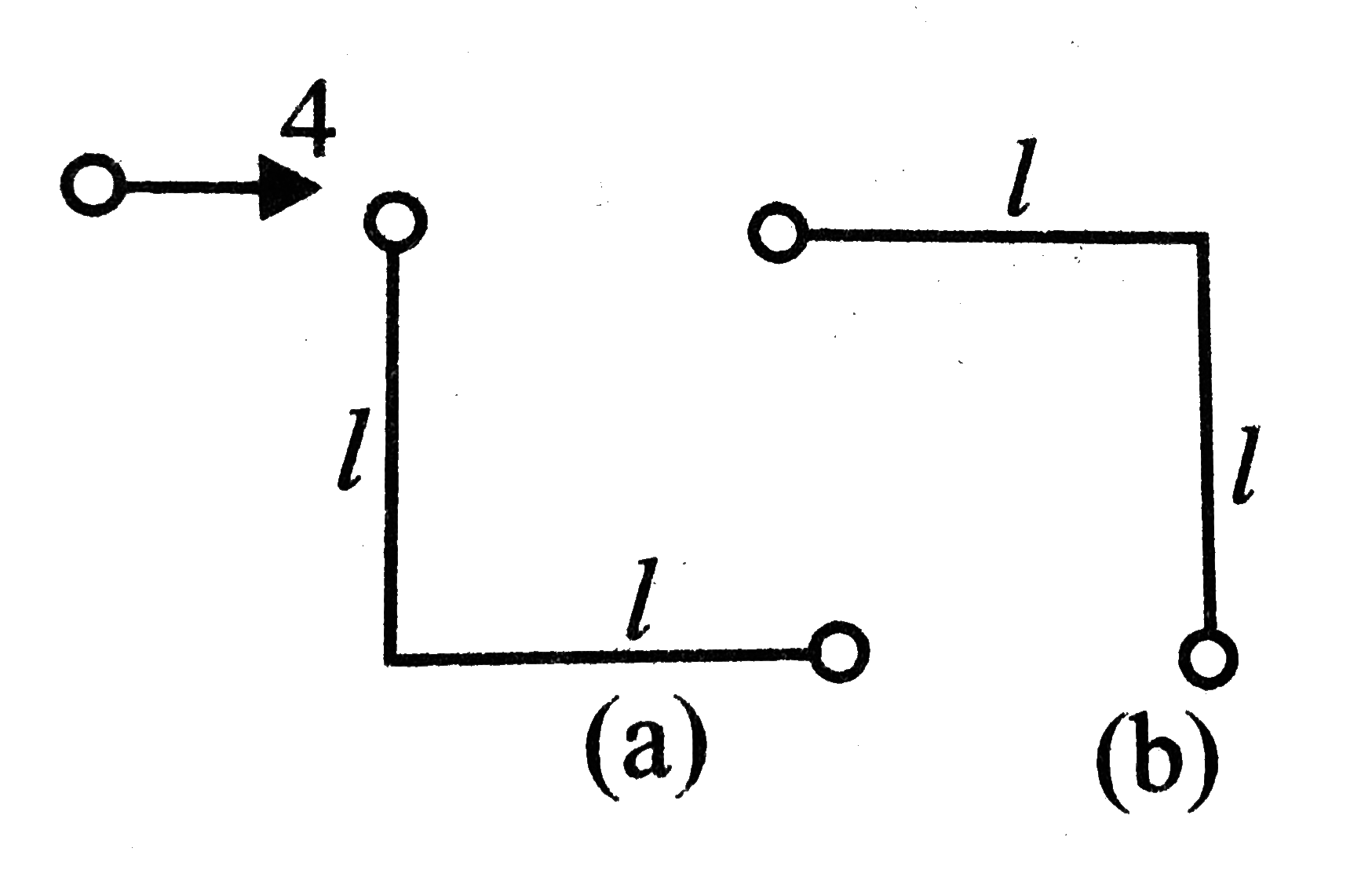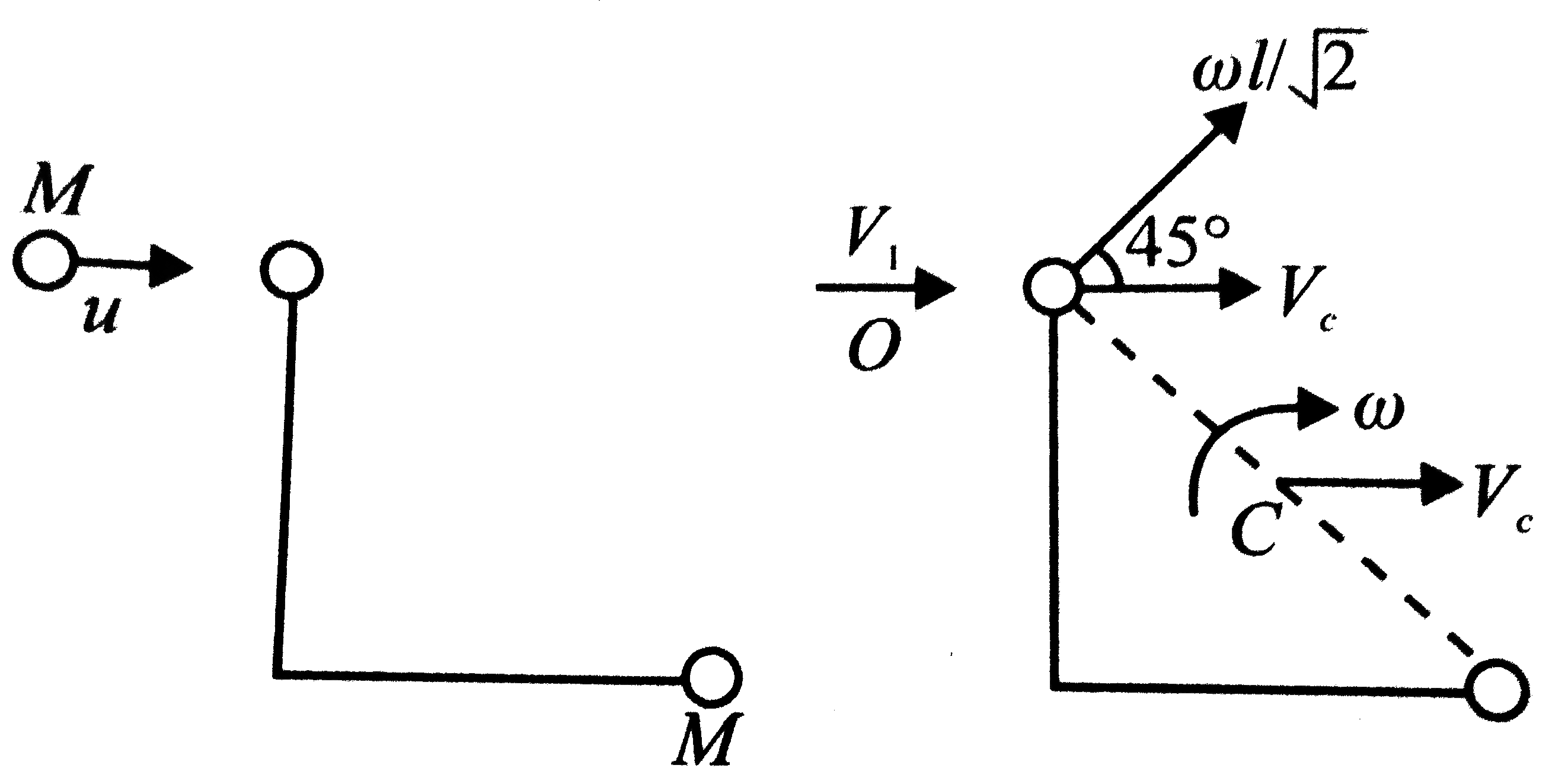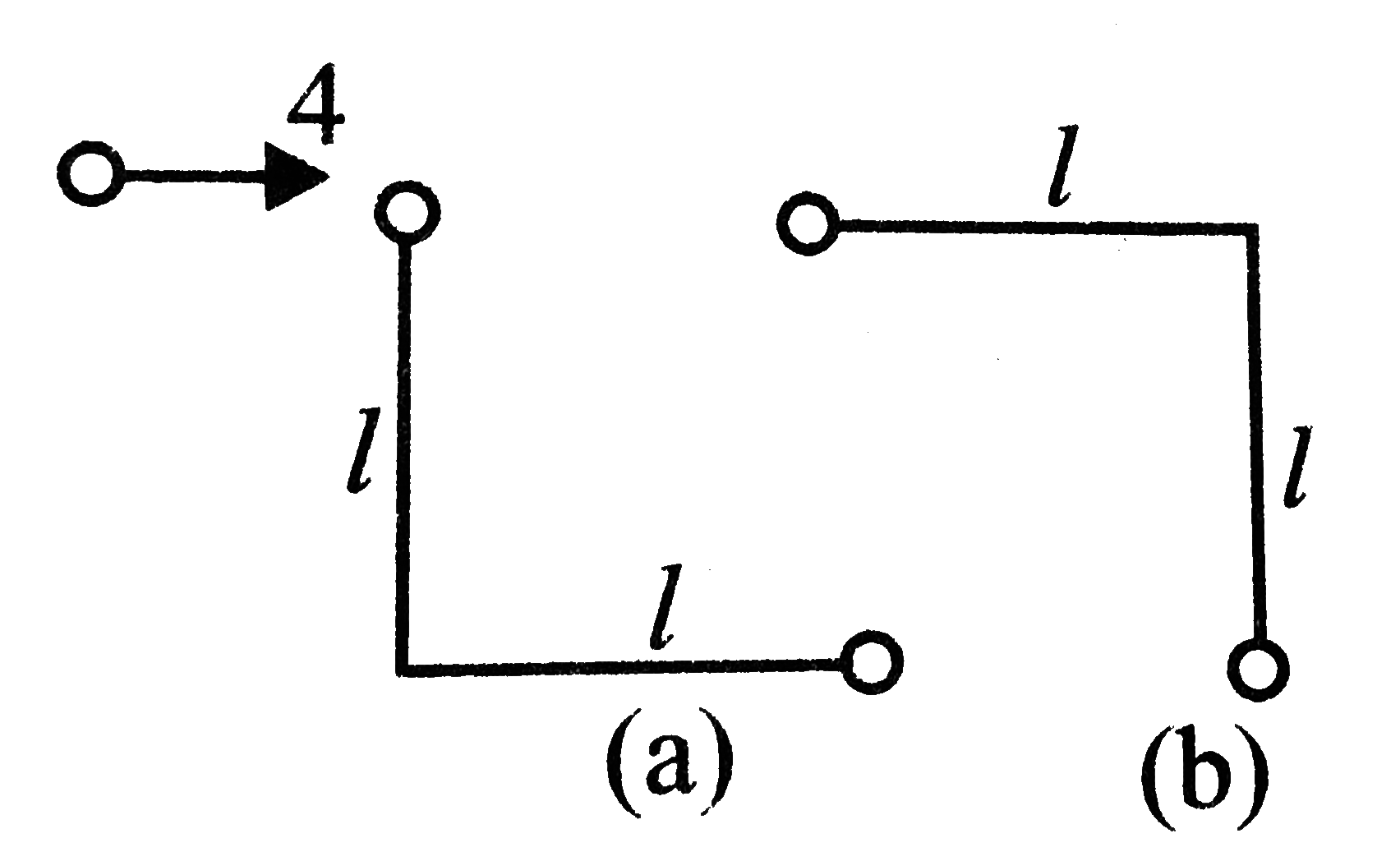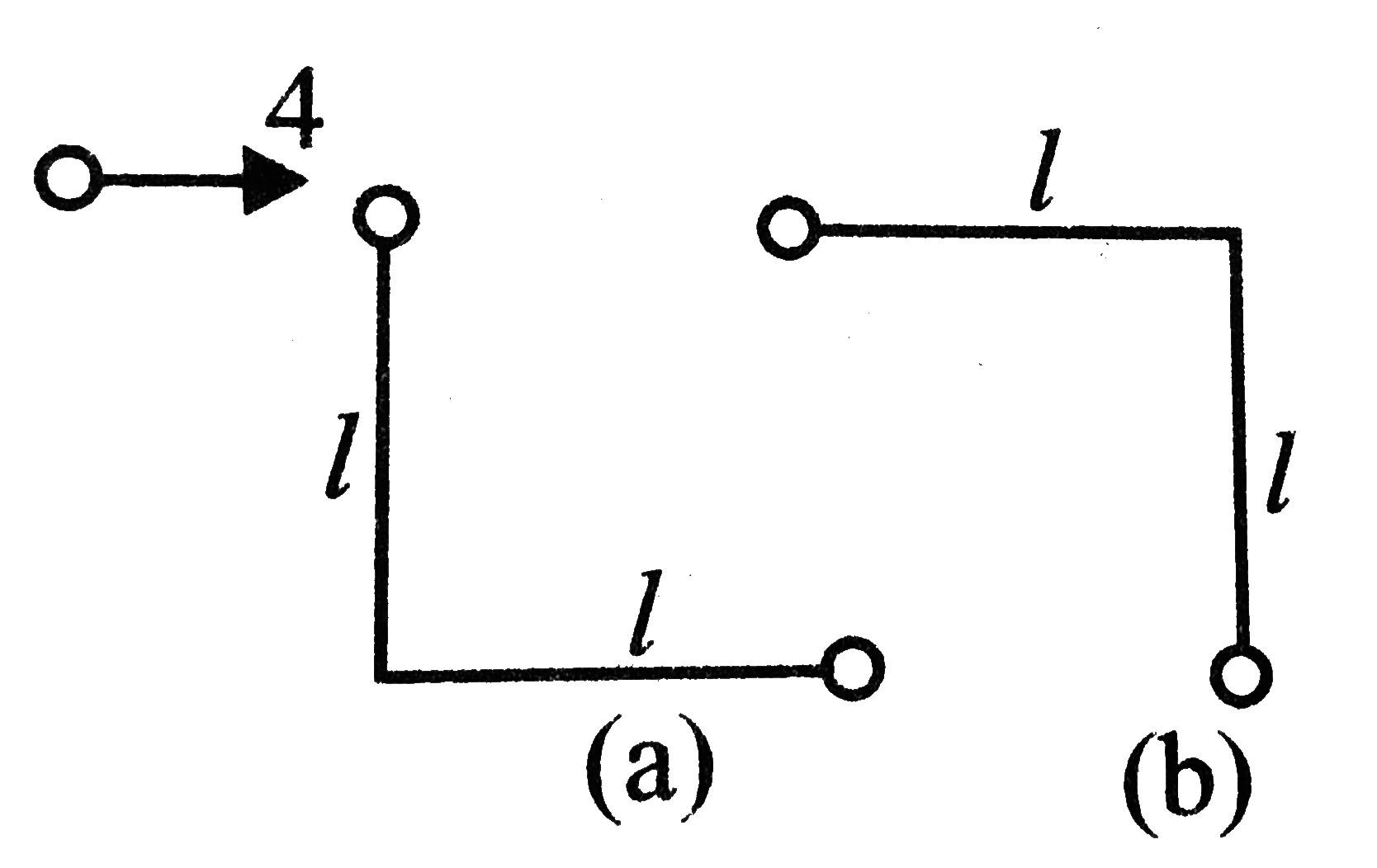A spherical ball of mass M moving with initial velocity V collides elastically with another ball of mass M, which is fixed at one end of L shaped rigid massless frame as shown in Fig. (a). The L shaped frame contains another mass M connected at the other end.

The speed of the striking mass after collision is
u/2 backwards
0
u/3 in same direction
u/7 backwards
The correct Answer is:D
Applying conservation of momentum
Mv1+2Mvc=μ
v1+2vc=u…………..i
e=1=vc+ωl2cos45∘−v1u−0
u=vc+ωl2−v1………ii

Applying conservation of angular momentum about FC
Mv1l2+2M(l√2)2ω=Mul2
v1+2ωl=u.............iii
Solving eqn i, ii and iii we get v1=−u7,ω=4u7l
Angle rotated θ=π
t=θω=7πl4u
Similar Questions
A ball of mass m moving with velocity v collides head on elastically with another identical ball moving with velocity - V. After collision
View SolutionA body of mass m moving with velocity v collides head-on elastically with another body of mass 2m which is initially at rest. The ratio of K. E. of mass m before and after the collision will be
View Solution
Knowledge Check
A spherical ball of mass M moving with initial velocity V collides elastically with another ball of mass M, which is fixed at one end of L shaped rigid massless frame as shown in Fig. (a). The L shaped frame contains another mass M connected at the other end.

The angular speed of L frame immediately after collisionA4u7lBu3lC4u2lDu7lA spherical ball of mass M moving with initial velocity V collides elastically with another ball of mass M, which is fixed at one end of L shaped rigid massless frame as shown in Fig. (a). The L shaped frame contains another mass M connected at the other end.

How soon will the frame come to the orientation shown in Fig. (b) after collision?Aπl4vB7πl8vCπlvD7πl2vA body of mass m2 moving with velocity v0 collides elastically with another mass of m3 . Find % change in KE of first body
A32B96C34D80
A particle of mass m moving with speed V collides eleastically with another particle of mass 2mFind speed of smaller mass after head on collision
View SolutionA ball of mass M moving with a velocity v collides perfectly inelastically with another ball of same mass but moving with a velocity v in the opposite direction. After collision
View SolutionA ball of mass M moving with speed v collides perfectly inelastically with another ball of mass m at rest. The magnitude of impulse imparted to the first ball is
View SolutionA body of mass M moves with velocity v and collides elasticity with another body of mass m(M>>m) at rest , then the velocity of the body of mass m is
View SolutionA body of mass M moves with velocity v and collides elasticity with another body of mass m(M>>m) at rest , then the velocity of the body of mass m is
View Solution
